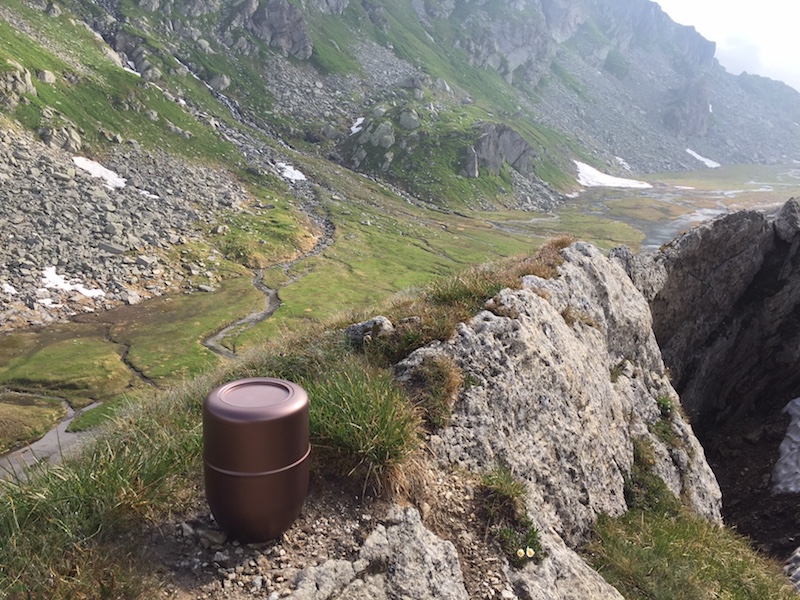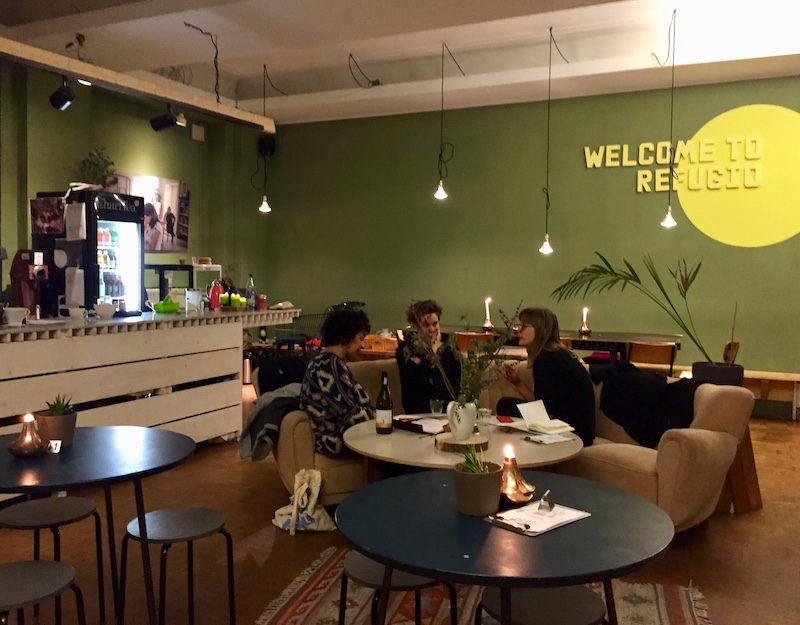
Moving into a palliative care hospice – my dad’s last house
From actively wanting to die, within two weeks his mindset switched into a different state. His body regained some energy, he stood up, walked in the hallway, he even asked me to bring him an Italian soft drink called Chinotto.
My dad had cancer at his pancreas. After going through a radiotherapy that had only a marginal effect on his cancer (not decreasing it nor stopping its growth), his strength started to gradually abandon him as he struggled to eat and absorb the nutrients. He did spend almost two months in a hospital after having got pneumonia. He became stable but was becoming weaker day after day.
Now he moved (or rather the caregivers moved him) to the palliative care section of a hospice for elder people. Palliative what? Palliative care is the medicine branch specialized in providing support to people that have illnesses that cannot anymore be cured. As a midwife helps to have a good birth, palliative care specialists help people to have a good death.
Moving into a palliative care hospice means to move in your last house. It is the confirmation that you are close to the end. Almost by definition, it’s not a happy moment.
But how could I tell to my dad, that was laying in bed at the hospital, that moving to the palliative care hospice was the best option he had? Or actually, that it was the only option he had, as he did not have the strength to stay home by himself anymore and it was too expensive to keep staying in the hospital?
The doctors tried to talk with my dad to explain him the situation. But I could see how the message they wanted to deliver to him, only hit the “surface”. They were talking to him rationally, without even mentioning the core of the message. He did not really understand what, where, when, not speaking of the why. So it was on me to deliver the message.
I have to admit that I tricked the message, by putting forwards positive arguments. I told my dad that everything would be better than keeping staying in that hospital serving that tasteless food, he continuously complained about. And in the hospice, he would have had a single room. I argued that moving to the hospice could be seen as a trial period and that if he would become stronger again he could go back to his apartment. But I saw in his eyes, that he was afraid that the hospice would become a definitive solution. He was not ready to accept that and I was not ready to talk about it.

The first day he moved in the palliative care hospice was terrible. When I went to see him, he was almost screaming at me. The bed was far too small, the mattress was not comfortable, the pillow was strange. The room was very small, there were only people suffering from dementia in the hallway and the caregivers did not understand him.
He made me feel as if I and the doctors had made a complot on his back and forced him to be there. All in a sudden the hours I spend during the last days trying to explain to him the situation and the (lack of) options felt as wasted time. In that moment I felt small and powerless while facing the size of his desperation.
But I knew that he was complaining about “surface problems”, while what we did not talk about was what he was truly afraid of. So we started to solve them where possible and put them back into a bearable perspective. The caregivers enlarged the bed, changed the pillow and the mattress. A nurse speaking Swiss-German came by to introduce herself, showing that there will be people around that would speak the mother tongue of my dad.

As the surface became calmer, like the water of the sea after a heavy storm, the next day we could start diving below the surface.
“I don’t want to give up my flat.”, he stated firmly. From the tone, it seemed as if there was nothing to argue about. I agreed, who would like to give up his home to live in an anonymous hospice room with salmon painted walls? However, I saw, that even the basics like picking up something falling on the floor, going to the toilet or changing clothes were becoming major challenges for my dad. He did manage, but there was no space for errors, I saw how in any moment his body may fall from the fragile support of his weaken legs.
Somehow giving up his flat was a condensed way to express that he did not want to give up his future. His flat was a symbol for the possibility to live independently again. He did not want to give up the hope to become stronger again, the possibility to get out of that salmon orange painted room.
But as one and then two weeks passed, gaining back the strength required to live by himself seemed to become an increasingly unrealistic plan. He also started to realize it. When I tried to talk about the situation of his flat, he started to become more open to the rational argument: he just did not have enough money to pay for both staying in the hospice and paying the apartment rent. We had to choose an option on the long-term and now I was around to help him.

We talked a lot. It was hard to talk about all things he could not anymore do because he was increasingly becoming weaker – like living in the own flat. So we focused our conversations and plans on what he and we could still do, despite this “new reality” dictated by his weakened body. We could go to the lake with the wheelchair, we could buy his favorite sausages at the supermarket, we could drink a chai tea while sitting in the sun. We could just be together and talk.
Then he sad that it was ok to give up his flat. He came up with the idea that maybe we could look for a place on a farm in the countryside, in the green, where a nurse could help him. It took some time. But somehow as he started accepting his new irreversible physical condition, and “let go” the thought about his flat, he started to become less negative and anxious.
Instead of feeling in a cage in that hospice room like during the first days, he started to perceive it as a place of transition. He had a positive dream in his pockets and now he had free “mind space” to dive deeper during our conversations.




